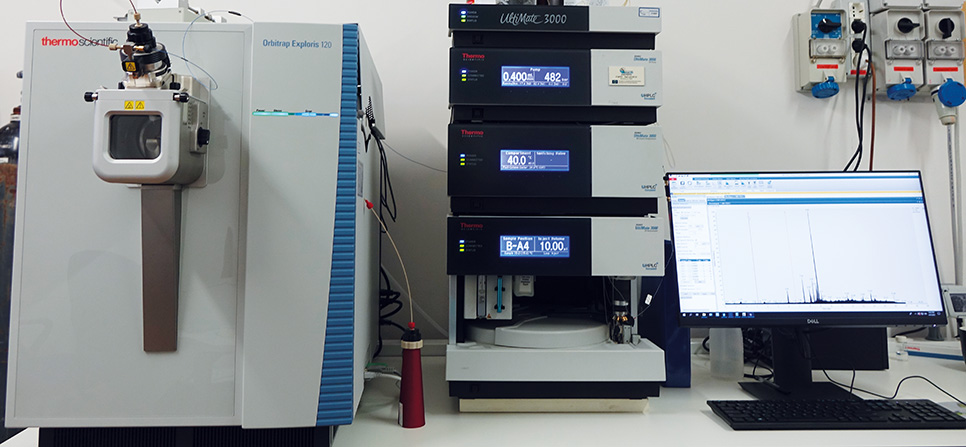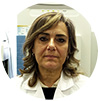SPEED AND PRECISION IN HUNTING POLLUTANTS

Two researches by IZS Teramo aim at making faster and more extensive the search for contaminants in the environment and in food. Towards more thorough monitoring of substances harmful to health
Identifying pollutants, measuring their quantities and tracing the paths through which they can enter organisms are top priorities for human health. They may be chemicals no longer in use, or more and more strictly regulated, but still present in the food chain. Or, sometimes, you simply do not have a precise idea of which molecule to look for: you need a "wide-ranging" search.
In both cases, monitoring technologies are fundamental tools for the protection of citizens. A step forward comes from two researches by Istituto Zooprofilattico Sperimentale dell’Abruzzo e del Molise, respectively by the National Reference Laboratory for Persistent Halogenated Organic Pollutants in Food and Feed and by the Bromatology and Residues Department .
The first one, published in the scientific journal Chemosphere, addresses four classes of chlorinated and brominated contaminants (PCDD / F, PCB, PBDD / F and PBDE). Some of them are used in industry, for example as flame retardants to create fire resistant materials, or as coolants. “We are talking - says Roberta Ceci, first author of the paper - about substances that may have been created specifically for certain purposes. But others, such as dioxins, can originate mainly from combustion (especially if uncontrolled), or they are unwanted by-products of some industrial production processes, such as steel or cement factories. Once in the environment, these molecules can enter the food chain through plants, but they can also affect the aquatic sector".
One of the health effects of these substances is in acting as "endocrine disruptors". In other words, they simulate the action of hormones, altering body's hormonal balance. For this reason, many of them are totally banned or are subject to strict regulations, so in Europe their presence in food is gradually decreasing. But monitoring remains essential. The research from the National Reference Laboratory for Persistent Halogenated Organic Pollutants in Food and Feed designed a detection method capable of simultaneously identifying four different classes of contaminants in a quick and automated way. “We tested - continues Ceci - samples of eggs, meat, milk, fish and molluscs. The performance of our method was comparable or superior to traditional analysis methods, with an advantage in terms of costs and time. We can draw a complete picture of four classes of contaminants, something particularly useful to address consumer exposure through diet".
Expanding the horizon of pollutant detection is also the goal of the other research, published in the International Journal of Food Contamination. Usually there is a "hunt" for substances that are already suspected to be present in a piece of land, in a particular food, in the aquatic environment. Maybe because it is already known that some pesticides have been used, or because there is a factory nearby or there have been spills in that area. But what to do when you have no clues? The answer is in a "non-targeted" analysis.
“The method we developed - says Rossana Scarpone, first author - aims to identify substances that are not chosen ‘a priori’, as it usually happens during environmental or food analysis. By using accurate and high-resolution mass spectrometry (HRAMS), in combination with advanced data analysis processes, we could detect pollutants in food in a wider, quicker and more efficient way".
The road is open to analysis methods enabling detection even of unexpected molecules (for example some pesticides that are not routinely monitored, or, in a different setting, new illicit drugs). “Clearly - continues Scarpone - a food is a complex product from a chemical point of view, containing a great number of molecules. But we know them well, and during data analysis we can 'subtract' them, highlighting only the ones not belonging to the examined food. Let's take a tomato: our technique will reveal many substances. The next step will be to eliminate those typical of the fruit, so the remaining, extraneous, one can be compared with the databases in order to achieve a specific characterization".

- Roberta Ceci
Ceci R., Diletti G., Bellocci M., Chiumiento F., D'Antonio S., De Benedictis A., Leva M., Pirito L., Scortichini G. & Fernandes A.R. 2022. Brominated and chlorinated contaminants in food (PCDD/Fs, PCBs, PBDD/Fs PBDEs): Simultaneous determination and occurrence in Italian produce. Chemosphere, 288, 132445

- Rossana Scarpone
Scarpone R., Rocchi R., Bacà F., Rosato R., Chiumiento F. & Giacomo Migliorati. 2021. Alternative method’s results for the non targeted determination of xenobiotics in food by means of high resolution and accuracy mass spectrometry. Int J Food Cont, 8, 1-8.
Istituto Zooprofilattico Sperimentale
dell'Abruzzo e del Molise "G. Caporale"
Campo Boario | 64100 TERAMO | ITALIA
Telefono 0039.0861.3321 | Fax 0039.0861.332251
e-mail: archivioeprotocollo@izs.it
Posta elettronica certificata: protocollo@pec.izs.it
Partita IVA: 00060330677
Codice Fiscale: 80006470670


